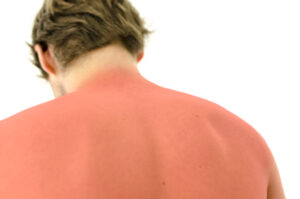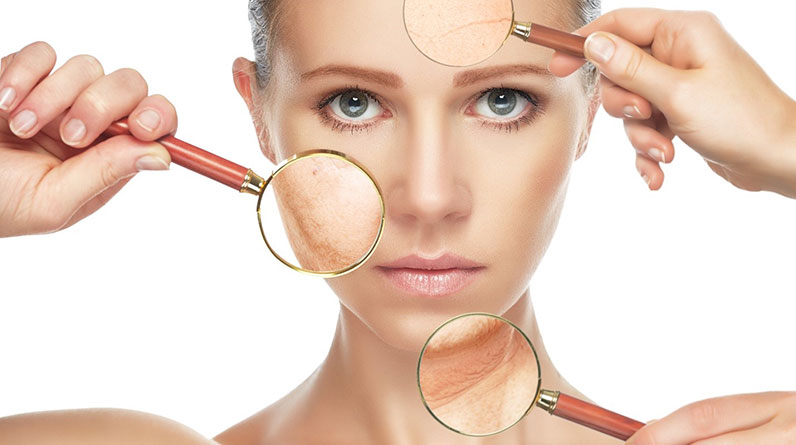
In 2023 The Impact of Sun Exposure on Skin Health Is Well Known
When warmer weather and longer days approach, it’s important to understand how sun exposure can affect our skin health. The sun’s ultraviolet (UV) rays can lead to various types of skin damage, including sunburn, premature aging, and an increased risk of skin cancer.
While the sun is a source of vitamin D, an essential nutrient for overall health and well-being, it’s crucial to balance the benefits with the risks. Skin damage by the sun is more likely with excess exposure and lack of protection.
In what follows, we’ll explore the various influences that increase the risk of skin damage, the different types of skin damage and their characteristics, and how sunscreen is important to protect your skin against harmful UV rays.
Increasing the Risk of Sun Damage
Exposure to sunlight is essential for good health, as it helps our bodies produce vitamin D. Yet, too much sun exposure can be harmful. Understanding the factors that increase our risk of sun damage is crucial in taking steps to protect our skin.
The following are factors that influence the risk of sun damage:
- Skin Type
Skin type plays a significant role in the risk of sun damage. Individuals with light skin, red or blonde hair, and blue or green eyes, for instance, have lower amounts of melanin, an innate pigment that aids in shielding the skin from ultraviolet rays.
This makes them more susceptible to sunburns, early aging, and higher skin cancer risk. People with darker skin, however, have more melanin, and thus, they have more natural protection from UV damage.
- Geographical Location
The level of UV radiation that reaches the earth’s surface varies depending on the location. The closer you are to the equator, for example, the higher the levels of UV radiation, thus a higher risk of sun damage.
It’s important to note that UV radiation can still cause damage at any location on the earth, even in areas with lower levels of UV radiation or colder climates.
- Time of Day and Season
The time of day and season can also affect the risk of sun damage. UV radiation is at its highest strength between 10 am and 4 pm, so avoiding being in direct sunlight during those hours is best.
Additionally, UV radiation is more intense during the summer months when the sun is at a different location in the sky. During these months, it’s imperative to act proactively to protect your skin.
- Altitude and Reflection
Similar to the location on the earth, altitude and reflection can also increase the risk of sun damage. The higher the altitude, the closer you are to the sun, which means there is less atmosphere to absorb UV radiation.

This makes people who live at higher altitudes more susceptible to sun damage. Additionally, surfaces such as water, snow, and sand can reflect UV radiation, increasing our exposure.
- Lifestyle Factors
Finally, lifestyle factors such as outdoor activities and tanning habits can also increase the risk of sun damage. Individuals who are outside a lot, especially without protective clothing or sunscreen, are at a higher risk of sun damage.
Similarly, people who use tanning beds or engage in other tanning practices, especially without protection, are also at a higher risk of sun damage since they expose their skin to high levels of UV radiation.
Common Types of Skin Damage by the Sun
Types and Variances of Skin Damage Caused by Sun Exposure:
- Sunburn
Sunburn is a common form of skin damage caused by UV radiation and sun exposure. It occurs when the skin becomes red, swollen, and painful due to overexposure to the sun.
Sunburn can have both short-term and long-term effects on the skin. In the short term, sunburn can cause pain, itching, and peeling. In the long term, repeated sunburns can lead to significant skin issues over time.

- Pigmentation Changes and Sunspots
Prolonged sun exposure can also cause pigmentation changes in the skin, leading to the formation of sunspots or age spots. These spots are flat, brown spots that typically appear on the face, hands, arms, and other areas frequently exposed to the sun.
Sunspots are caused by the overproduction of melanin, which colors the skin. While sunspots are not harmful, they can be a sign of sun damage and are often considered a cosmetic concern.
- Premature Aging
Exposure to UV rays can also cause premature aging, known as photo-aging. Photo-aging of the skin is defined by fine lines, wrinkles, and a loss of elasticity.
UV radiation damages the skin’s collagen and elastin fibers, leading to the appearance of fine lines and wrinkles. Prolonged exposure to the sun can also cause a loss of skin firmness, making the skin look saggy and dull.
- Skin cancer
Skin cancer is the worst type of skin damage caused by sun exposure and is the most common type of cancer in the US. Excessive sun exposure can damage the DNA in skin cells, leading to mutations that can result in skin cancer.
The main types of skin cancer are basal cell carcinoma, squamous cell carcinoma, and melanoma. Basal cell carcinoma and squamous cell carcinoma are more commonly seen and are often curable if detected early. Melanoma is less common but more dangerous, as it can spread to other locations in the body if left untreated.
One of the most important steps we can take to protect our skin from the harmful effects of the sun is to use sunscreen. When choosing a sunscreen, it’s essential to look for a broad-spectrum sunscreen that provides protection against both UVA and UVB radiation. Choosing a sunscreen with an SPF of 30 or higher and a formulation that suits your skin type is the best practice.
In addition to using sunscreen, it’s also essential to seek shade, wear light-reflecting and protective clothing, and avoid prolonged sun exposure during peak hours. Regular skin exams and early detection are also crucial in preventing and treating skin cancer.
Final Thoughts
While the sun provides us with many benefits, overexposure to its harmful UV radiation can cause significant damage to our skin. Understanding the types of skin damage caused by sun exposure and taking proactive steps to protect our skin can help prevent short-term and long-term skin damage and reduce the risk of skin cancer.



